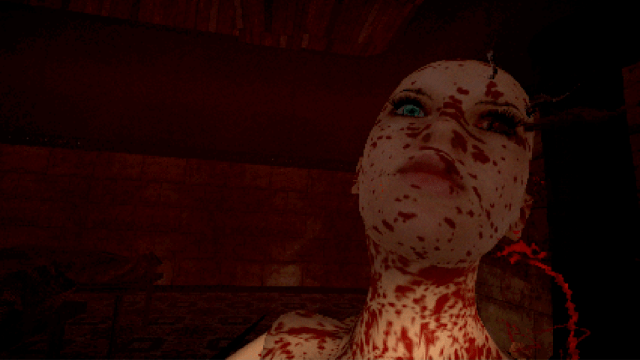The Glass Staircase, released last week for PC and Mac, tries to capture the feeling of classic horror games like Clock Tower and Silent Hill. When I saw my coworker Luke Plunkett post the trailer on Kotaku, I was intrigued. My early time with The Glass Staircase has been tense, revealing a moody game that silently waits until you’ve finally relaxed before killing you.
Capturing the essence of fixed-camera horror games can be tricky. It’s not simply about having tank controls or adding a little bit of fog to your game. The Glass Staircase has those things, but it also understands the value of a good slow burn. You play as a group of children inside an run-down manor. One by one, you are made to explore and perform simple tasks: Grab this package that was delivered, light all the candles in the house.
But something’s wrong. A dark force lingers just out of sight, and when you least expect it, tragedy arrives. In my first hour or so with The Glass Staircase, two of my playable characters seem to have died, and I’m sure that more deaths are to come. It results in a sort of Groundhog’s Day loop.
Each new day starts calm before slowly shifting to something more sinister. That cyclical structure might allow me to get to know the manor grounds better but it can’t prepare me for bloody monsters.
What I appreciate about The Glass Staircase most at the moment is how it uses space. One of the things I love about games like Resident Evil is how the fixed camera perspective is used to create a sense of alienation and dread.
You don’t really know what’s down the hall or around the corner because you can’t see it. Games that shift perspectives, like the recent Resident Evil 2 remake, have their own tricks for keeping things tense—enemies that stalk you, gory combat—but they miss out on this particular brand of unease.
For instance, one early part of The Glass Staircase involves a hedge maze. The camera makes it all the more easy to get lost, which is uncomfortable and even a bit frustrating. It also means that the maze can shift off-camera, or add a terrifying monster right out of frame. It’s smart, using the limitations of early horror to create a memorable set piece.
I’ve not progressed far enough to get to the gorier bits teased in the trailer. I haven’t picked up a gun and shot a shambling husk-creature yet. But The Glass Staircase has proven a solid student of the slow burn.
Whatever explosive confrontations await, there’s been plenty of silent wanderings to go with it. That’s some solid horror game design, sure to please anyone eager for a fresh scare.

Comments